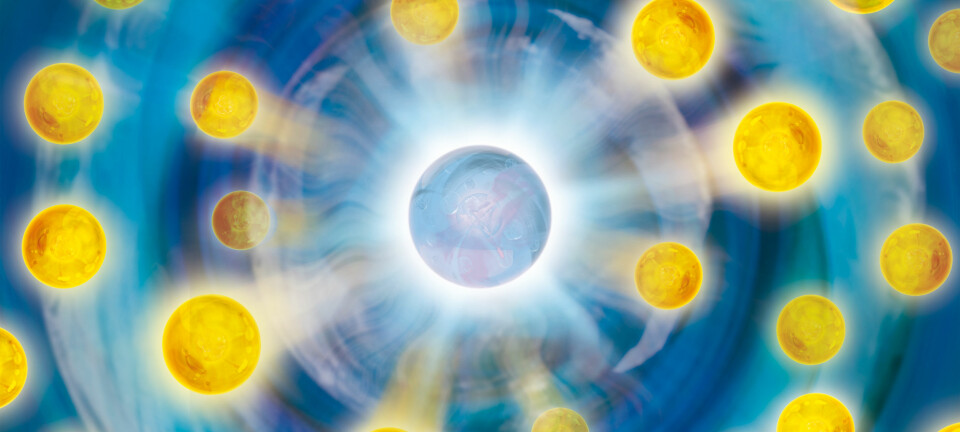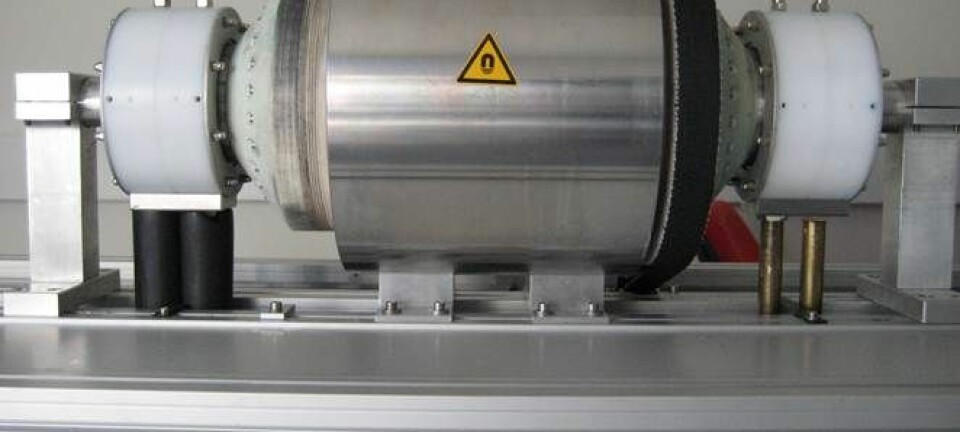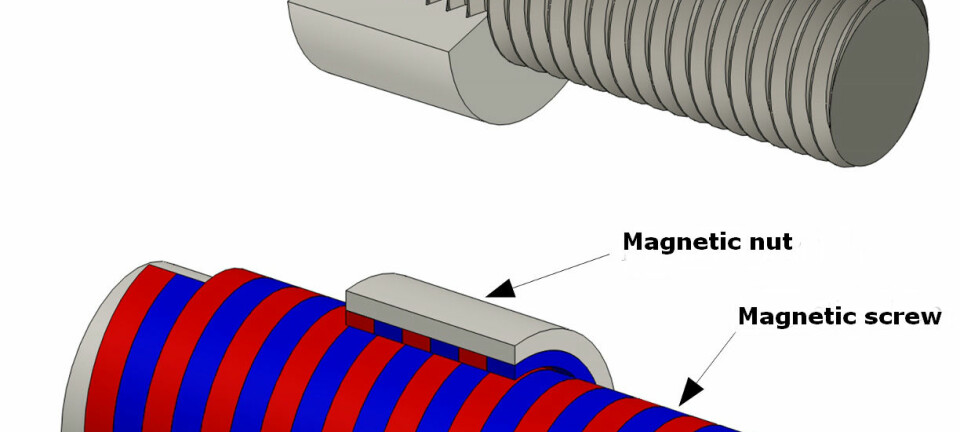
Super magnets to strengthen tomorrow’s green energy supplies
By designing a new type of nanocomposite magnets, we can build wind turbines and electric cars that are far more energy efficient than today.
It may not be something we think about every day, but our energy production is closely associated with magnetism.
The kinetic energy from a wind turbine is converted into electricity by means of magnets in generators, and electricity is converted into movement by magnets inside electric car motors.
For such reasons, the environmentally friendly inventions of the future are highly dependent on the availability of strong and effective magnets.
With this in mind, several research groups worldwide have started to look into how new magnets can be created at nano level.
Twice as strong as existing magnets
If we can produce magnets that can generate more energy relative to their size, it would be extremely useful in processes where e.g. wind energy is converted into electricity.
Cathrine Frandsen
One research project on the creation of new types of magnets is headed by Cathrine Frandsen, an associate professor at the Technical University of Denmark’s Department of Physics, who was recently granted a Sapere Aude research stipend from The Danish Council for Independent Research.
“The efficiency of electromotors and generators is highly dependent upon the strength of the magnets inside them,” says Frandsen.
“If we can produce magnets that can generate more energy relative to their size, it would be extremely useful in processes where e.g. wind energy is converted into electricity.”
Researchers worldwide are trying to come up with new ways of making magnets that are stronger than any other. The current aim is to produce a permanent magnet that is about twice as strong as the existing ones.
The secret lies in combining materials
The trick in developing even stronger magnets may lie in combining different magnetic materials. If the different properties of these materials are combined in just the right way, it should be possible to build a very powerful magnet.
Cathrine Frandsen
”The most effective magnets we know about today consist of neodymium-iron-boron,” she says. “They are sometimes used in toys, where they can pack an impressive punch.”
She explains that we probably cannot develop the strong neodymium-iron-boron magnets that we have been using for almost 30 years any further.
”The trick in developing even stronger magnets may lie in combining different magnetic materials. If the different properties of these materials are combined in just the right way, it should be possible to build a very powerful magnet.”
Ideally, researchers would like to juxtapose something as strongly magnetic as neodymium-iron-boron and e.g. iron-cobalt – a material that is even more magnetic than neodymium-iron-boron, but also less permanently magnetic. Iron-cobalt has a tendency to ‘forget’ about its magnetisation, so to speak, unless it is combined with another magnetic substance that can help its memory a little on the way. One of these could be neodymium-iron-boron.
Nano level LEGO play
Even though it was predicted theoretically more than 20 years ago how particles should be placed in order to make a new super magnet, no-one has so far succeeded in making it.
Cathrine Frandsen
The way these alloys should be combined is by no means random. In practice, the magnet may be constructed by combining the magnetic nanoparticles of the two alloys in a highly specific way.
”Fabricating and combining these particles in the exact right way is a huge challenge,” explains the researcher.
“Even though it was predicted theoretically more than 20 years ago how particles should be placed in order to make a new super magnet, no-one has so far succeeded in making it. For instance, the particles are so tiny that we cannot just sit and assemble them one by one as if they were LEGO bricks. We need to figure out how they can function just like LEGO bricks when they assemble themselves.”
The team at the Technical University of Denmark will be using electron microscopy to examine magnetic properties and particle assembly at the nanometre scale.
“We aim to clarify processes for making strongly magnetic nanocomposites,” says Frandsen.
High global demand for super magnets
”There is a great global interest in the development of these new super magnets, because of their use in future green-tech solutions.”
This interest is also much stimulated by the fact that nanocomposite magnets can reduce the use of rare earth elements such as neodymium, which is in short supply and consequently prices are soaring.
The long-term goal for researchers and industry is to figure out if and how a strong permanent magnet can be made by combining nanoparticles of the right alloys using processing methods that enable mass production of powerful magnets with manageable production costs. Then we could really start to harness the power of super strong nanocomposite magnets in tomorrow’s effective transport and energy solutions.
-------------------------
Read the Danish version of this article at videnskab.dk
Translated by: Dann Vinther







